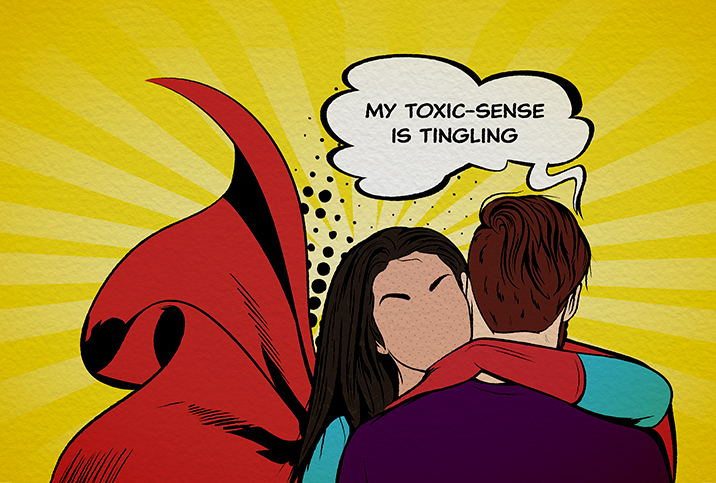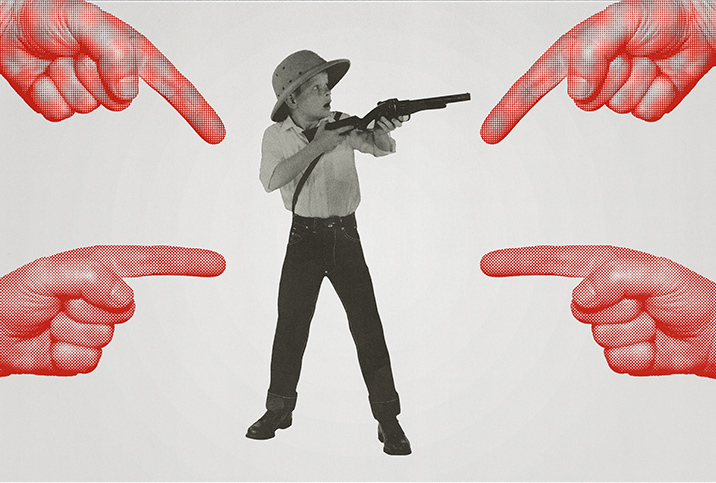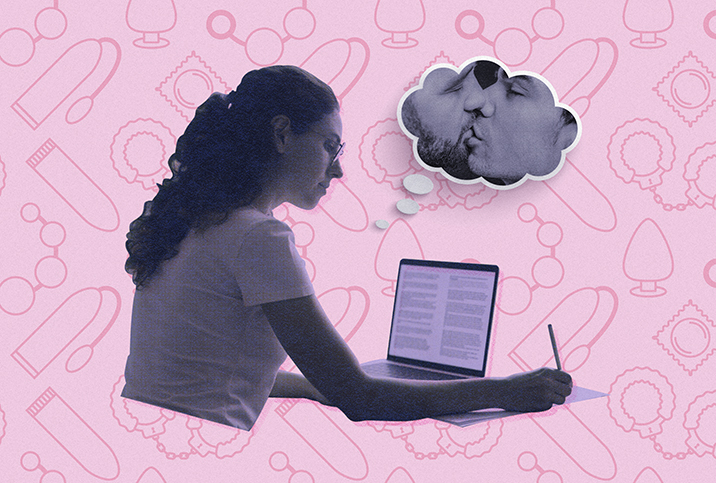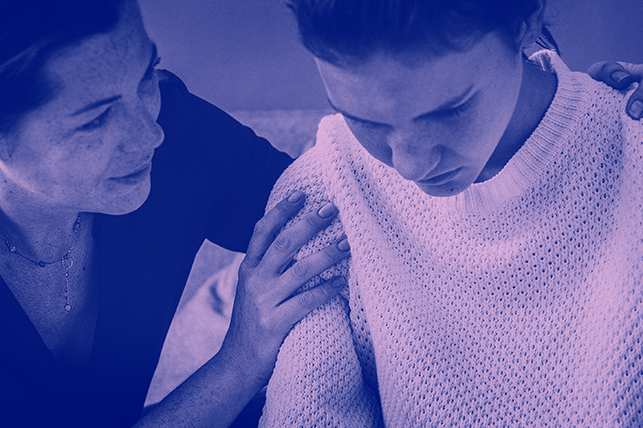Don't Look to Comics for Relationship Advice

Considering their charisma, mystique, taut physiques and affinity for latex, it's not surprising superheroes of page and screen tend to have no trouble finding dates. But when writers stretch these dalliances into relationships, it becomes a literal different story.
With egos as monumental as their unresolved emotional issues (looking at you, Batman), many heroes are predisposed to bad romance. In fact, the Marvel and DC universes are rife with examples of toxic relationships of all kinds, from familial to romantic.
"Like consuming something poisonous, toxic relationships are harmful," said Matt Glowiak, Ph.D., a counselor at Choosing Therapy, based in Bolingbrook, Illinois. "Whether a quick death or a slow, painful one, they do their due regardless."
Glowiak and three other experts said we should think twice before right-swiping on a superhuman. They also explained six of the most problematic relationships in the Marvel and DC universes.
What makes a relationship problematic?
The term "toxic" is ubiquitous in the popular lexicon, with some folks using it to describe almost anyone whose vibes are less than positive. For many experts, though, the term is weightier than its colloquial usage implies.
Heather Kent, a registered psychotherapist and trauma recovery specialist based in Ontario, said toxicity can take several different forms, but a toxic relationship is generally unhealthy or abusive in some way.
"Not all toxic relationships are abusive, which is important to remember, but all abusive relationships are toxic," she added.
"A toxic relationship can be described as a consistent and problematic dynamic between individuals that can cause intense emotional strain, unhealthy communication styles and constant feelings of being mentally drained, unsafe or harmed in multiple ways," said Mykal Manswell, a licensed clinical mental health counselor associate with Thriveworks in Raleigh, North Carolina. "Toxic relationships can negatively impact one's physical, mental, emotional, spiritual, financial and professional well-being."
Bonnie Scott, therapist and founder of Mindful Kindness Counseling in San Antonio, agreed. People in these tumultuous relationships often bring out the worst impulses in each other, she explained.
"Toxic relationships can be anywhere in our lives: romantic, friends, family, co-workers," she said. "Any relationship that feels exhausting to maintain probably has some toxicity."
Are fictional superheroes prone to toxic relationships?
All four of our experts agreed that while comic lore is filled with diverse characters, generally, superheroes tend to have specific characteristics predisposing them to toxic behaviors. These include narrow views of right and wrong, a need for control and having a grandiose sense of self. Genetics, childhood trauma, toxic parenting and other experiences that alter their psychological development or social interactions factor in, too.
For example, many superheroes perpetuate toxic masculinity by upholding macho stereotypes. This topic was discussed at length in 2010 at the American Psychological Association's annual conference, Kent explained.
In a presentation there, Sharon Lamb, Ph.D., a professor of mental health at the University of Massachusetts-Boston, said, "Today's superhero is too much like an action hero who participates in nonstop violence; he's aggressive, sarcastic and rarely speaks to the virtue of doing good for humanity. When not in a superhero costume, these men, such as Iron Man, are shown exploiting women, flaunting bling and conveying their manhood with high-powered guns."
The 6 most problematic super-relationships
1. Doctor Strange and Christine
Doctor Strange, a neurosurgeon with an illustrious track record, is as genius as he is cocky. Though he and Christine Palmer weren't together in the comics, the films present them as former lovers turned friends. Palmer goes above and beyond for the mystical doctor throughout the relationship, but he rarely reciprocates.
"She's brilliant and loves him, and he literally just always looks annoyed by this," Scott said. "Then she decides to move on and marry someone else, and he shows up at her wedding to throw heart eyes for her. Too late, dude, let her have her day. But he does not. He has to jump off the balcony and fight an alien so that everyone is looking at him again."
2. Batman and…well…everyone
Another toxic super-relationship?
"Any relationship with Batman," Scott said. "That dude is the worst: super-obsessed with his job, angry and emotionally distant, the totalitarian commitment to his secret identity—I could go on and on. When he's with Catwoman, they bring out the worst in each other, but not before they go through the whole attempt at not being terrible to each other. He's also a mess with Rachel Dawes and Talia. Batman is not relationship material."
Of course, Batman's exes weren't perfect partners, either. A classic antihero, Catwoman is equally as self-involved as her heroic counterpart. And although her connection with Batman is unquestionably intense, the villain Talia drugged and sexually assaulted him to steal his DNA to produce an heir. Remember, kids, consent is mandatory.
3. Harley Quinn and Joker
Harley Quinn and Joker, a match made in madness, is the emblem of toxicity and a "classic representation of the cycle of abuse," according to Kent.
She explained that Quinn has an unhealthy trauma bond with Joker, who consistently pulls her back into a life of crime and also emotionally and physically abuses her through "hoovering" techniques. Hoovering, in the context of abuse, is a manipulation tactic that uses love bombing, fake crises, stalking and smear campaigns.
"He manipulates and ridicules her constantly and basically did whatever he could to break her down so she would stay with him," Scott said. "He knew her abandonment and trauma triggers and exploited them."
"Though there is some evidence that he does, indeed, care for her, this does not stop him from putting her through continued mental and physical anguish," Glowiak said. "The codependency here is real. If you have any reason to compare your relationship to theirs, it's likely best to call it quits."
In other words, if your partner suggests going as Harley Quinn and Joker to a fancy dress party, maybe think it through.
4. Kilgrave and Jessica Jones
To most viewers, it should be clear the relationship between Kilgrave and Jessica Jones—particularly the one illustrated in the Netflix TV series—is unequivocally, horribly abusive.
Kilgrave's mind-control capabilities, combined with his complete lack of empathy, create a perfect storm of narcissistic and sociopathic toxicity, according to Manswell and Kent.
"It is a constant struggle for the women he controls to assert their independence from him and, when they do, to convince the world of his crimes because of his outward charm and charisma. He's the perfect example of a malignant narcissist," Kent said.
Although abusive people don't possess psychic abilities, she added, their control over the recipients of their abuse is very real.
"And while Kilgrave considered their relationship authentic and loving, he constantly used his powers to force Jones to validate and care for him, perform sexual acts and do his bidding against her will," Manswell noted.
"Eventually, Jessica Jones broke free of his influence, but the severe damage to her mental health had lasting effects, including having auditory and visual hallucinations of Kilgrave and being diagnosed with PTSD," he added.
5. Tony Stark and Pepper Potts
"Highly intelligent, good looking and stacked with more money than many small, independent nations, Tony Stark is quite the catch," Glowiak said. "Well, he certainly thinks he is, as does his faithful assistant, Pepper Potts."
At the same time, Stark is vain and arrogant, especially in his interactions with women.
"Regardless, Pepper not only falls for Tony but his ploys as well," he added. "A romantic one moment and playboy the other, Tony has his cake and eats it, too."
Tony Stark's assistant, Pepper Potts, first emerged in 1963 in the comic "Tales of Suspense." Their relationship, which Scott described as "so creepy and flirty" in its initial stages, reflects the period in which the comic was published, as well as superheroes' propensity toward stereotypical "manly" behaviors. Even when the pair's relationship evolved into a mutual romantic one, he constantly lied to her and put his work above all else, Scott added.
6. Reed Richards and Sue Storm
The Fantastic Four, which Manswell described as "Marvel's first family of superheroes and one of the most iconic and recognizable teams" in the superhero canon, includes husband and wife Mr. Fantastic, also known as Reed Richards, and the Invisible Woman, also known as Susan Storm.
Ironically, the latter's title indicates how her husband treats her, Manswell added.
In addition to constantly dismissing his wife's requests and feelings, Manswell explained, Richards has no qualms about keeping significant secrets from his wife and "not consulting her on major life decisions, whether it is about him being a part of the super-secret group of the Illuminati or deciding to turn off the superpowered mind of their son to save the universe."
He noted that Richards constantly undermines his wife and refuses to acknowledge and respect her skills and talents, perceiving her success as a threat.
"Reed struggles to recognize and appreciate Sue's potential as a true leader, equal and lover in an appropriate manner and uses his intelligence to disregard her talent," Manswell said.
They're just like us
While comic books—and the Hollywood blockbusters adapted from their stories—are meant to be fun distractions from the sometimes mundane reality of everyday life, some of their relationships reflect how our own romantic experiences in the real world can be derailed.
Our list isn't exhaustive or representative of every iteration of these superhero couples—there are literally thousands of superheroes in the world of comics—but these popular examples of problematic relationships are worth keeping in mind if you find yourself pining for the love of a superhero in the future.


















